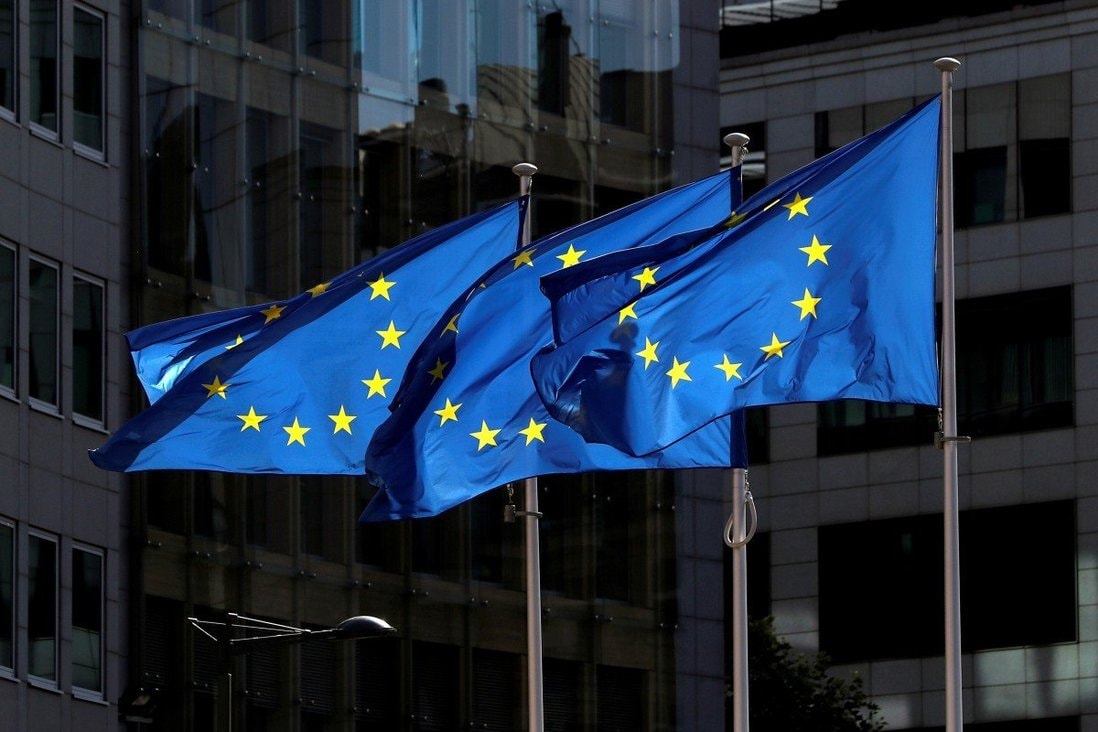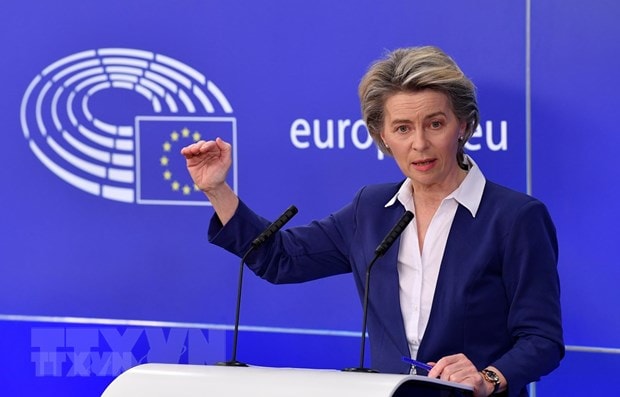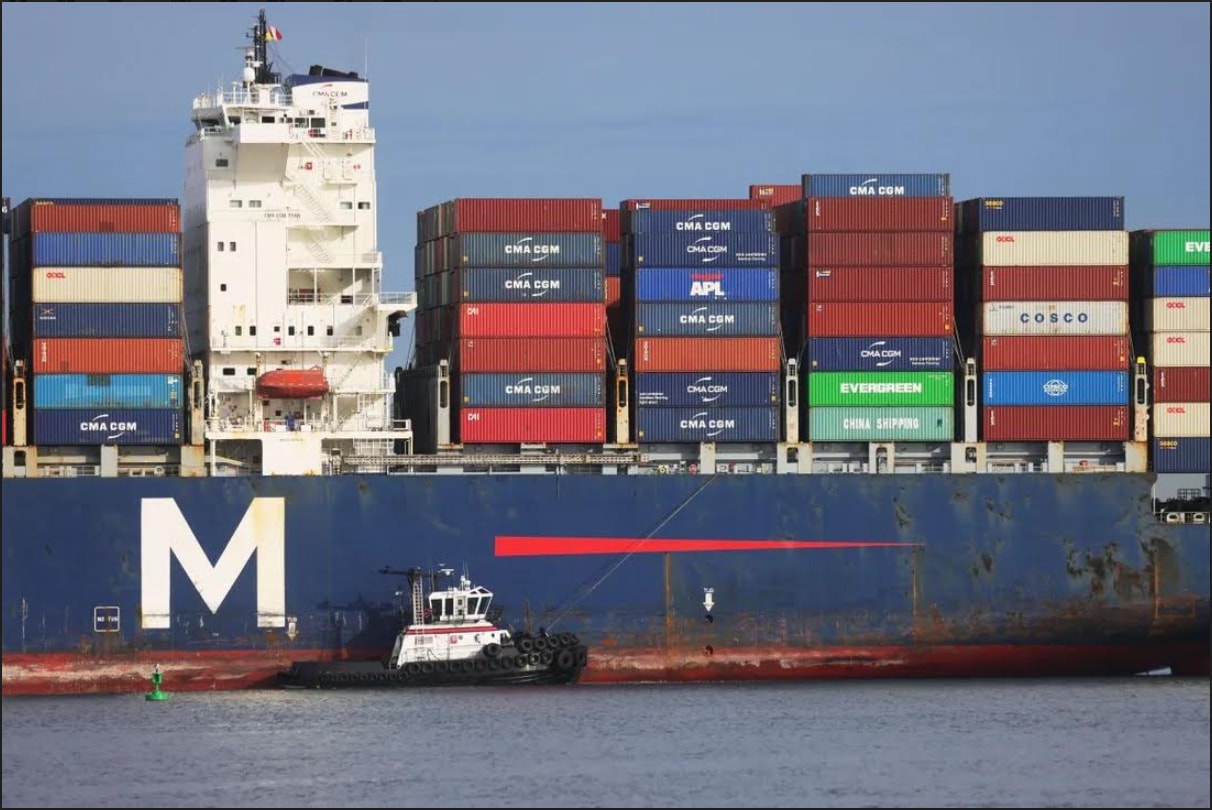New trade strategy: EU's negotiating 'weapon' against the US and China
(Baonghean.vn) - The EU announced its new trade strategy in an effort to create a trade balance with its two partners, the US and China, and at the same time "shoot" clear signals to both that they can strongly respond to any external threats with more decisiveness and autonomy.
Europe will be more assertive and autonomous!
Trade policy ofEuropean Union(EU) is a central tool to deal with the challenges posed by globalization and turn its potential into real benefits. Compared to the 2019 strategy, the new strategy published by the European Commission (EC) on February 18 is intended to convey a clearer message about the bloc's stance on trade. The "keywords" in this strategy are "being more open, assertive, and autonomous" in global trade and "shaping the world around us." The EU sees this as a way to deal with challenges including climate change, unilateralism, and the economic consequences of the Covid-19 pandemic.
 |
| The European Commission unveiled a new trade strategy described as more assertive on February 18. Photo: Reuters |
In terms of specific implementation, the new strategy highlights the important priority of reforming the World Trade Organization (WTO), including restoring its appellate body so that countries can resolve any outstanding disputes. The EC affirmed that the WTO's new Director General, Ms. Okonjo-Iweala, in early March, is a good opportunity to start reform. In its trade strategy for the next decade, the EC also wants trade agreements to comply with the commitments in the 2015 Paris Climate Agreement. This could include liberalizing trade in "green" goods and services or agreements to cut fossil fuel subsidies. Currently, ratification of the free trade agreement between Europe and the Mercosur bloc (in South America) is on hold, due to concerns that the agreement will increase large-scale deforestation in the Amazon region in South America.
“Fighting forced labor” is another focus of the EC’s new trade strategy. Brussels has pledged to put in place mechanisms to ensure that companies are not allowed to use “forced labor” in trade deals with Europe. In parallel, the EU is stepping up efforts to ensure that trade deals benefit its workers, farmers and citizens.
Change to adapt
Given in the context of a changing world,The EU's new trade strategyis a tool to guide the bloc’s actions, laying the foundations for future trade negotiations with countries outside the bloc. Looking further, the EU wants to set its own trade rules, becoming a “major player” in the global trade arena.
Over the past few years, the EU has struggled to promote its multilateral trade agenda. In the context of fierce trade disputes and the imposition of tariffs by the US under President Donald Trump, the EU has been forced into a difficult position, both passive and dependent. It is also the time when the "old continent" economies realize that they need to have a more autonomous strategy.
 |
| EC President Ursula von der Leyen speaks at a press conference. Photo: AFP |
In addition, as China emerges as the second largest economy after the US and has a significant impact on EU member economies, the bloc is forced to make careful calculations to achieve trade balance and ensure fair competition. “Ensuring China fulfills its greater obligations in international trade and addressing the negative impacts in EU-China economic relations will be at the heart of the EU’s efforts to rebalance the bilateral trade relationship,” the EU trade policy statement said.
Another factor driving the EU’s new strategy is to create a foundational tool for high-level negotiations with the new US administration on a range of trade issues. Joe Biden has pledged to reverse the policies of his predecessor, Donald Trump, including reviewing punitive tariffs on EU goods and possibly resuming negotiations on the Transatlantic Free Trade Agreement. The EU is likely to hope for a clear strategy that will be more beneficial when it comes to negotiations with Washington.
Thus, the new trade strategy can be seen as a “weapon” of the EU in dealing with current challenges as well as in line with the current rapidly changing global trade environment.
Wise balancing strategy
The EU is the leading trading partner of 74 countries in the world. Therefore, any adjustment to the region's trade strategy will have more or less impact on the economies that are "doing business" with the EU. However, the two most important factors that need to "decode" the EU's strategy are the US and China. Because in general, Brussels wants to use this new strategy to assert its independent position in trade with the two largest economies in the world. Some observers believe that the new policy shows the EU's "bias" towards Washington, but in reality, Brusselshard to turn awaywith China as some politicians in the US call for.
 |
| Europe has identified trade as a top priority for cooperation with China, including joint monitoring of China's commitments to subsidy transparency, intellectual property protection and "market opening". Photo: AFP |
Beijing’s rapid recovery from the Covid-19 pandemic at least partly explains its moves in the right direction on trade. Moreover, China is not only the largest and fastest-growing BRICS economy, but its foreign policy has been significantly more protectionist than Europe’s in recent years. China’s offer of access to European companies in a number of sectors – namely financial services, real estate, construction and transport – is a promising opportunity for the EU to rebalance its economic relationship with China. Data released earlier this week showed that China overtook the US last year to become Europe’s largest trading partner for the first time. So, while Europe has hailed its trade relationship with Washington as “the largest and most important economic partnership in the world,” the reality is that it still needs to “get on board” with China. And the new trade strategy is the tool for Europe to balance these goals in the future.
Overall, by strengthening alliances in the transatlantic partnership, along with a stronger focus on its neighbors and Africa, and principled “doing business” with China, the EU aims to be able to shape the future of global trade change.

